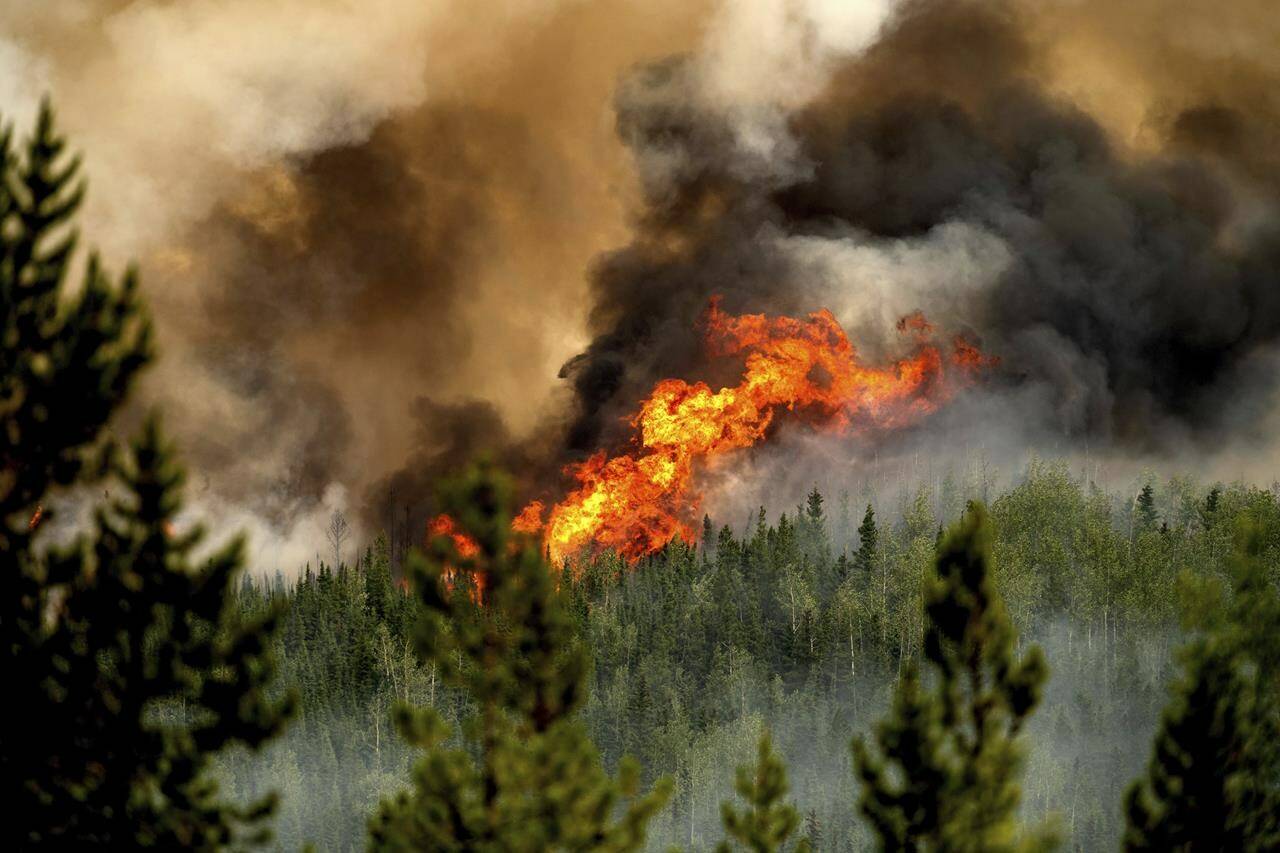As wildfires spread south and closer to urban areas during what could be the most difficult month for wildfires, the provincial government will spare no cost and effort.
Emergency Management Minister Bowinn Ma and Forest Minister Bruce Ralston delivered that message during the latest update on the wildfire and drought situation Wednesday (Aug. 2).
“We do know that we are in the midst of a very challenging wildfire,” Ma said. “We have currently seen about 1.5 million hectares of forests burned so far. (Previous) to this year the most we saw burned for an entire year was 1.35 million hectares. As the wildfires begin to move further south, we will see more populations impacted as well, which means the increased likelihood of more evacuation alerts, more evacuation orders, more impacts on individuals and families and those communities.”
Perhaps the most illustrative example of Ma’s prediction was the evacuation of parts of Osoyoos last weekend as the Eagle Bluff fire spread aggressively across the border with the United States into the Canada. That fires continues to grow, but the evacuation zone has shrunk as the fire moves away.
“We will do what it takes and to spend whatever it takes to fight these wildfires and support communities through these evacuations,” she said.
Ralston then echoed Ma’s line. “(There) is no upper financial limit, if the wildfire season continues to deteriorate,” he said.
As predicted, recent weeks have seen a geographic shift in wildfire activity. While officials have downgraded many fires burning in the Northwest, Prince George and Cariboo fire centres, considerable resources are now fighting fires in the southern parts of the province, including areas near Chase, Lillooet and Cranbrook, key among them the St. Mary’s River fire.
Officials consider that fire now held, a “significant achievement” in the words of Cliff Chapman, director of provincial operations for B.C. Wildfire Service. With fires burning elsewhere, crews will shift some but not all resources away from that fire in case they are needed, he added.
Other areas, however, have seen increased activity with evacuation orders and alerts in effect across several areas. Ma said about 530 people are under evacuation orders with just over 9,500 under evacuation alert across the province, with 361 wildfires currently burning. Fourteen of those are wildfires of note, Ralston added. Since April 1, 1,576 wildfires have burnt a total of 1.5 million hectares, he added.
B.C. has entered August, which Ma called historically the most challenging month for wildfires, against the backdrop of severe drought conditions across the province. July was the hottest month ever on record and 23 of B.C.’s 34 water basins are either experiencing Level 4 or 5 drought conditions.
The Northeastern corner, the Central Plateau and Vancouver Island currently record the worst drought conditions at Level 5, meaning adverse impacts are almost certain. The Lower Mainland, the Similkameen as well as the East and West Kootenays find themselves at Level 4.
Ma repeated previous appeals to save water, adding officials are unsure how much rain the province will see in the fall.
READ MORE: Ban on lawn watering to soon take effect in Metro Vancouver amid drought
Several municipalities and regions, including Metro Vancouver, have announced additional measures to conserve water. On Friday, the Metro Vancouver Regional District will be moving to Stage 2 watering restrictions, the first time since 2015.
Ma said that wildfires and drought conditions are also impacting wildlife, adding that she has heard reports about bear encounters with humans. She reminded the public that the province reduced angling times in the Kootenay waterways, adding that the province will not hesitate to impose additional measures.
Agriculture Minister Pam Alexis announced last week that government would be working to connect hay and feed with farmers and ranchers in immediate need.
READ MORE: B.C. working to source hay, feed for farmers in need immediately
READ MORE: B.C. ranchers struggle as drought sends hay prices soaring
It was the first weekly update since news broke that another wildfire firefighter was killed while working.
Zak Muise, 25, has been identified as the firefighter who was killed while assisting with the Donnie Creek wildfire, near Fort. St. John. It’s B.C.’s largest wildfire at more than 583,000 hectares as of July 25.
B.C. Wildfire Service and Fort St. John RCMP confirmed the death Saturday, noting Muise was working in a remote area, about 150 kilometres north of Fort St. John, when the UTV he was riding on, rolled over a steep drop on a gravel road.
Muise is the second firefighter to die in B.C. this season, and the fourth in Canada.
READ MORE: Firefighter dies battling B.C. wildfire; 2nd fatality this summer
READ MORE: Firefighter killed in B.C. identified as Zak Muise
@laurenpcollins1
lauren.collins@blackpress.ca
Like us on Facebook and follow us on Twitter.
@wolfgangdepner
wolfgang.depner@blackpress.ca
Like us on Facebook and follow us on Twitter.

